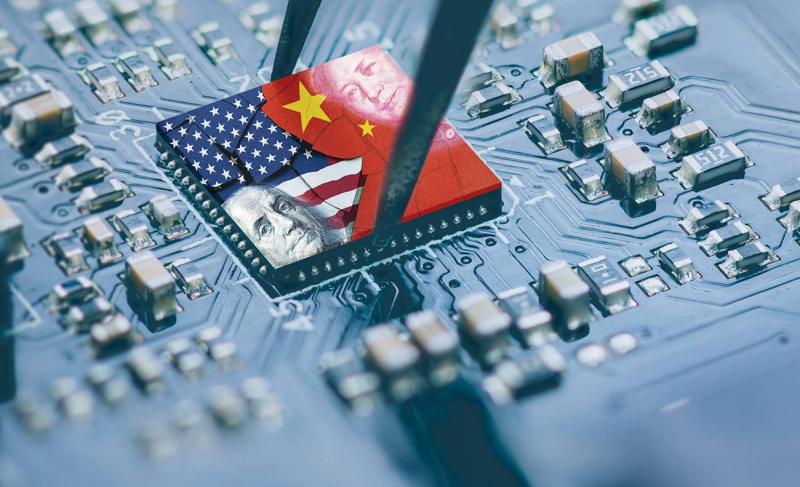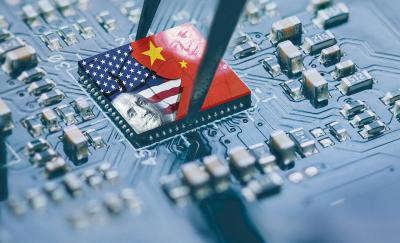An intense and growing conflict has emerged on the international stage between the United States and China, disguised under the pretext of "trade." However, the reality is much deeper. At its core, the struggle revolves around acquiring technological superiority, particularly in the semiconductor and communications industries, which are deemed the primary gateway to dominance and national security. China is determined to transition from a service-oriented economy reliant on cheap labor to a manufacturing economy, thereby transforming the current concept of "Made in China" into a future reality of "Made in China 2025." Meanwhile, the U.S. aims to keep technological superiority under its control or in the hands of those who operate within its influence to maintain its position as the world's sole superpower.
Semiconductors and their components, including integrated circuit (IC) chips, are among the most crucial technologies in the contemporary world, forming the foundation for electronic devices and digital technology in general. The U.S. wields its protective and precautionary measures unilaterally under a commercial guise and through legal instruments, such as "Section 301 investigations" or "the Biden Administration's FDI order," to prevent other countries from surpassing it technologically or threatening its economy or national security.
In the 1980s, Japan underwent several U.S. "Section 301 investigations" when its economy was the second largest in the world. During that time, the sales volume of semiconductors from three Japanese companies was the largest globally, and Japan was the biggest exporter of cars and electronics to the U.S. This rise of Japan in manufacturing and price competition led to the bankruptcy of many American companies in the Great Lakes region, where American manufacturing was centered. Had Japan not accepted a coercive settlement limiting its exports to the U.S. and easing its markets and policies in favor of American companies, it would have faced comprehensive sanctions under "Section 301."
What Japan encountered in the 1980s from U.S. pressure is now being faced by China. However, the results are likely to be different, especially since China emerged victorious in World War II, giving it wider maneuverability.
The two largest Chinese companies in technology and communications, including semiconductors, 5G networks, and integrated communication and information solutions, namely "ZTE" and "Huawei," have faced a series of U.S. sanctions and export bans on American products. Alongside these measures, a continual stream of U.S. protective tariffs has targeted numerous Chinese goods amounting to hundreds of billions of dollars. China has recognized that its early lag in the semiconductor industry is one of the main challenges facing its current technological and digital sectors. The events concerning "ZTE" in 2018 were merely a "blow" it faced in the race for technological superiority, which must strengthen it if it wishes to break U.S. hegemony.




